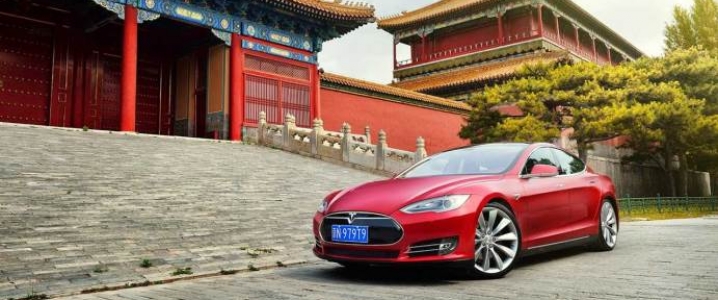China continues to dominate the world’s electric vehicle sales, but a new study finds that a good chunk of it is going to fleets to meet government mandates as subsidies fade away.
Findings from a new study show a first-ever breakout of sales by consumers and fleets. Led by China’s Sina.com news with contributions from the ChinaEV100 trade group and a Chinese market research firm, the study found that in the first 11 months of last year, fleets purchased about 22.7 percent of the total.
With the China Association of Automobile Manufacturers reporting national sales of about 886,000 new battery electric and plug-in hybrid vehicles (called “new energy vehicles” by the government), that meant about 201,000 of them went to fleets of various types.
That number passed 1 million total for the year, China’s largest number yet. At 1.26 million new energy vehicles sold, the number leaped 62 percent from a year earlier.
The toughest selling point for EVs in China, like in all other EV markets, is getting consumers to take electric-powered vehicles seriously enough to eliminate the generous government incentives it’s taken to reach this level.
The government will be winding down subsidies for new energy vehicles by the end of 2020. As China, the U.S., and European countries have seen, incentives have been crucial to convince consumers to switch over to the new technology.
The Chinese government has mandated that the country becomes less dependent on oil imports, along with reducing air pollution in its growing and crowded cities. The target is to replace dependence on gasoline and diesel with other energy sources, especially electricity and liquefied natural gas (LNG). Related: Qatar’s Latest Move Is A Stroke Of Geopolitical Brilliance
China is leading the way in electric-powered vehicles, with Bloomberg NEF predicting that the country will keep its 50 percent share in global EV sales from now until 2025. That number will recede to about 39 percent of EV sales by 2030.
For China, fleet sales have always been integral in growing its NEV sales. China is the dominant global market for electric buses, and electric trucks and vans have made for part of it. The national government has been joined by regional and municipal policies and incentives throughout China, with much of it going to fleet vehicles such as police cars and metro bus lines.
That will all be switching over from a subsidy-based program to one similar to that which California started a few years ago in its zero emission vehicle mandate. Automakers will be required to meet a sales quota through an NEV credit system in China beginning this year, with incentives being phased out by 2020.
The solar power sector has already seen this happen in China. Last summer, the Chinese government pulled state support for solar power companies. Some of that came from President Donald Trump’s 30 percent tariff placed on Chinese solar products coming to America. But it also comes from the Chinese government capping down on funds being placed in subsidies, which many times have ended in fraudulent reports coming from manufacturers trying to guarantee receipt of more subsidies.
Automakers have been starting up car-sharing and ride-hailing services in China to meet emissions and traffic congestion reduction targets, sometimes through joint venture partnerships with Chinese manufacturers.
BMW has placed 200 BMW 5-Series sedans, half of them plug-in hybrids, in the southwest China city of Chengdu. They’re being used for a ride-hailing service in the city.
Chinese maker BAIC Motor Corp. launched car-sharing division BAIC Mobility in April 2017. By the end of last year, 30,000 NEVs had been delivered to BAIC’s subsidiary. Related: There’s No Slowing U.S. Natural Gas Production
Geely Automobile Holdings has placed more than 27,000 electric compact cars to its Caocao Zhuanche ride-hailing company.
Tesla is now in an ideal position to sell its NEVs directly to consumers or fleets. On January 7, the U.S. electric carmaker broke ground on its new Gigafactory in Shanghai. The company plans to produce Model 3 and Model Y electric vehicles at that plant along with its battery packs.
CEO Elon Musk is hoping to see initial production in China of the popular Model 3 towards the end of this year, and volume production next year. He’d been able to make Tesla the first wholly-owned car plant in China operated by a foreign company.
Tesla and major global automakers have been reliant on subsidies to see EV sales numbers grow each year. Tesla and General Motors will soon see its tax incentives end in the U.S. as volume sales caps are being reached.
Fleets in the U.S. have yet to be convinced that investing in EVs is worth it, with gasoline and diesel prices remaining stable. They do tap into all available government incentives when converting over to electric and alternative-fueled vehicles.
Other countries, including China, Norway, and the Netherlands, have also handed out generous subsidies to get consumers and fleets to switch over to EVs. Those will all be running out at some point, and car buyers will have to be convinced of the merits of owning electric- over petroleum-powered vehicles.
By Jon LeSage for Oilprice.com
More Top Reads From Oilprice.com:
- U.S. Refiners Brace For Venezuelan Supply Crunch
- The ‘Venezuela Benefit’ For Canadian Oil Producers Is Limited
- Oil Prices Rise As Saudis Pledge Deeper Cuts


















